Mumbai travel - India, Asia
Mumbai, formerly known as Bombay, is the bustling capital of Maharashtra, located on the western coast of India along the Arabian Sea. With a population of around 20 million, it is not only India's largest city but also one of the most populous urban areas in the world.
The city is a melting pot of religions, languages, and traditions, reflected in its vibrant arts scene, colorful festivals like Ganesh Chaturthi and Diwali, and rich heritage. Mumbai is also the financial heartbeat of India, housing key institutions like the Reserve Bank of India and the Bombay Stock Exchange. Additionally, it’s the home of Bollywood, the world’s largest film industry, producing over a thousand movies each year.
Population Estimate 21 million (as of 2024)
Economy: Mumbai is often called the financial capital of India, housing major financial institutions like the Bombay Stock Exchange, National Stock Exchange, and the Reserve Bank of India. Contributing around 6% of India's GDP, the city is a powerhouse for industries such as finance, IT services, textiles, and pharmaceuticals, while also being home to the Bollywood film industry. For travelers, Mumbai's economic vibrancy offers a wide range of experiences, from luxury shopping and dining to exploring bustling street markets and local cuisine. The city's well-developed infrastructure and global connectivity make it a convenient and exciting destination for tourists.
Landmarks: Gateway of India, Chhatrapati Shivaji Terminus (CST), Bandra-Worli Sea Link, Rajabai Clock Tower, Marine Drive, Elephanta Caves, Haji Ali Dargah, Siddhivinayak Temple
India
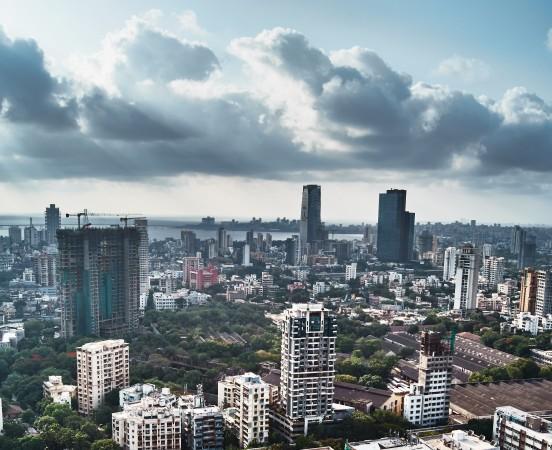
Overview of Mumbai
History & Cultural Influence
Mumbai's rich history dates back to ancient times when it was a collection of seven islands, primarily inhabited by the Koli fishing community. These islands were part of various empires, including the Maurya Empire, and played a significant role in Hindu-Buddhist culture. The city's transformation began under Portuguese control in 1534, and later in 1661, the British took over as part of a marriage dowry. This marked the start of Mumbai's development into a key trading hub for the British East India Company. By the 19th century, land reclamation projects merged the islands, fueling rapid industrialization and establishing Mumbai as a major port city. Post-independence, the city flourished as India's financial capital, although challenges like overcrowding emerged. Today, Mumbai is a melting pot of cultures, with its diverse population reflected in its vibrant festivals, cuisine, and everyday life.
Interaction with The Locals
Visitors to Mumbai will find themselves immersed in a dynamic city that thrives on its diversity and warmth. With a bustling metropolis where cultures, languages, and religions blend seamlessly. While Hinduism is the dominant religion, the city is also home to sizable Muslim, Christian, Buddhist, Sikh, and Jain communities. This rich mix is reflected in the everyday life, from the festivals celebrated to the languages spoken—Marathi, Hindi, English, Gujarati, and more.
Mumbaikars are known for their friendliness and hospitality. Tourists can expect locals to be curious about their background and happy to offer tips on the best spots to explore. Whether sampling street food or navigating the busy markets, you’ll find that most interactions are welcoming. However, it’s essential to respect local customs, like dressing appropriately when visiting religious sites. While Mumbai dazzles with its upscale areas, it’s important to be mindful of the city's stark economic contrasts, with affluent neighborhoods alongside vast slum areas. A thoughtful approach will ensure respectful and meaningful connections during your visit.
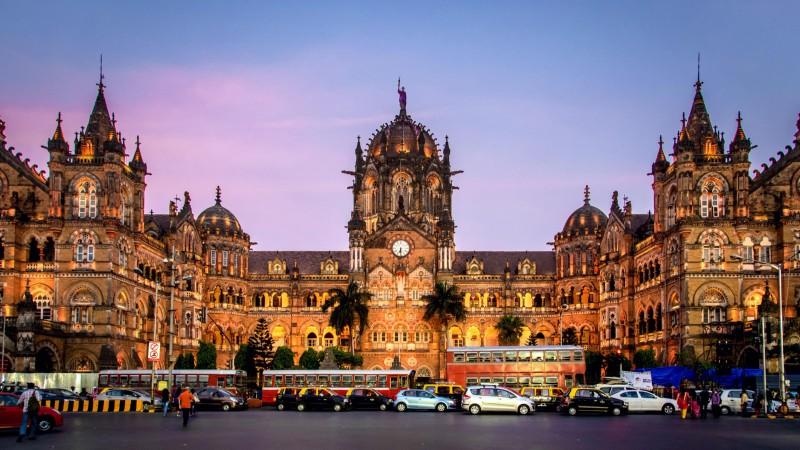
Chhatrapati Shivaji Maharaj Terminus - © Mazur Travel
Top attractions in Mumbai
Mumbai offers a vibrant mix of historical landmarks and modern marvels that captivate travelers. The iconic Gateway of India, standing tall by the Arabian Sea, is a must-visit, offering stunning views and a gateway to nearby attractions like the Elephanta Caves. For breathtaking coastal scenery, a stroll down Marine Drive, known as the "Queen's Necklace," is perfect, especially at sunset. Visitors can also explore the architectural grandeur of Chhatrapati Shivaji Maharaj Terminus, a UNESCO World Heritage Site.
Gateway of India
Location: Apollo Bunder, South Mumbai
The Gateway of India, built in 1924, stands as an enduring symbol of Mumbai’s rich history and grandeur. Originally constructed to honor the visit of King George V and Queen Mary to India, this 26-meter-high Indo-Saracenic arch overlooks the Arabian Sea and serves as a ceremonial gateway to the city. Today, it is a lively hub where tourists and locals gather, and it's also the departure point for ferries heading to the Elephanta Caves, a UNESCO World Heritage Site just a short boat ride away.
Chhatrapati Shivaji Maharaj Terminus (CST)
Location: Western Part of India meeting the shores of the Arabian Sea
Chhatrapati Shivaji Maharaj Terminus, a UNESCO World Heritage Site, is not just one of India’s busiest railway stations, but also an architectural wonder. Completed in 1887, its design blends Victorian Gothic Revival with traditional Indian elements, creating a strikingly beautiful facade adorned with intricate carvings, domes, and spires. The station stands as a reminder of Mumbai’s colonial past and is an essential stop for anyone interested in the city's architectural and historical heritage.
Marine Drive
Location: South Mumbai
Marine Drive, stretching 3.6 kilometers along the Arabian Sea, is one of Mumbai’s most iconic spots. Known as the "Queen’s Necklace" for the way the streetlights form a sparkling arc at night, this picturesque promenade is a favorite among locals and tourists alike. Whether you’re enjoying a quiet morning walk, indulging in street food from local vendors, or watching the sun set over the horizon, Marine Drive offers a perfect blend of relaxation and the vibrant energy of the city.
Elephanta Caves
Location: Elephanta Island, Mumbai Harbour
A visit to the Elephanta Caves transports you back to ancient India. Located on Elephanta Island, about a 45-minute ferry ride from the Gateway of India, these rock-cut temples date back to the 5th to 8th centuries and are dedicated to Hindu deities, especially Lord Shiva. The intricate carvings, including the famous three-headed Shiva sculpture, are a testament to the artistic and spiritual heritage of India. Recognized as a UNESCO World Heritage Site, the caves offer a serene escape from the hustle of the city.
Haji Ali Dargah
Location: Dargah Road, near Lala Lajpatrai Marg, Haji Ali, Mumbai
Perched on a small islet off the coast of Worli, the Haji Ali Dargah is a stunning example of Indo-Islamic architecture. Built in the 19th century, this mosque and tomb honor the Muslim saint Haji Ali and can only be reached via a causeway during low tide. The walk to the dargah, surrounded by the sea, creates a peaceful and spiritual experience. It’s not just a religious site but a symbol of Mumbai’s diverse culture, drawing visitors from all backgrounds to appreciate its serene beauty.
Chhatrapati Shivaji Maharaj Vastu Sangrahalaya (formerly Prince of Wales Museum)
Location: 159-161, Mahatma Gandhi Road, Kala Ghoda, Fort, Mumbai
Located in the heart of the city, this museum is one of India’s premier cultural institutions. The building itself is a stunning example of Indo-Saracenic architecture, with domes, balconies, and expansive courtyards. Inside, visitors can explore an extensive collection of artifacts, including sculptures, decorative arts, and exhibits on Indian history, art, and culture. For history buffs and art lovers, this museum offers a deep dive into India’s rich past, making it a must-visit when in Mumbai.
Bandra-Worli Sea Link
Location: Mount Mary, Bandra West, Mumbai
The Bandra-Worli Sea Link, stretching over 5.6 kilometers, is an engineering marvel and a modern symbol of Mumbai's rapid growth. This cable-stayed bridge connects the western suburbs to South Mumbai and offers breathtaking views of the city’s skyline and the Arabian Sea. A drive across the sea link, especially at night when the bridge is illuminated, is a memorable experience, blending the beauty of modern architecture with the vastness of the sea. It's a favorite spot for photographers and those looking to capture the essence of Mumbai's dynamic cityscape.
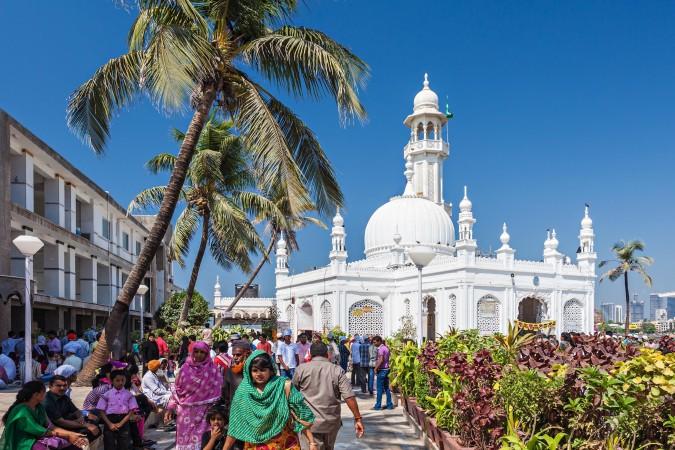
Haji Ali Dargah - © dailysabah
Must-Try Dishes in Mumbai
Mumbai is a food lover's paradise, offering a variety of iconic street foods that reflect the city's diverse culture. Must-try dishes include Vada Pav, a spicy potato fritter sandwich that's perfect for a quick snack, and Pav Bhaji, a rich vegetable mash served with buttery bread rolls. For those craving bold flavors, Pani Puri and Bhel Puri offer a burst of tangy, sweet, and spicy tastes, making them irresistible choices for visitors exploring the city's vibrant food scene.
- Vada Pav: Often referred to as Mumbai's own version of a burger, Vada Pav is a spicy potato fritter served inside a soft bread roll, accompanied by tangy chutneys and fried green chilies. It's a quintessential Mumbai street food, loved for its bold flavors and affordability, offering a quick bite for those on the go.
- Pav Bhaji: Pav Bhaji is a flavorful mash of vegetables cooked in spices and served with buttered bread rolls. Originally created as a quick meal for workers, it has become a popular comfort food for all. Its rich, buttery flavors make it a must-try for anyone exploring Mumbai's vibrant street food scene.
- Bhel Puri: A light yet tangy snack, Bhel Puri is made from puffed rice, vegetables, and chutneys. This crunchy delight is often enjoyed during casual strolls along Mumbai's bustling streets, offering a refreshing mix of sweet, sour, and spicy flavors.
- Pani Puri: Pani Puri is an explosion of flavors with hollow puris filled with spicy tamarind water, potatoes, chickpeas, and chutneys. This street food staple is known for its unique burst of flavors and is a favorite during social gatherings or evening outings.
- Misal Pav: A spicy, hearty dish, Misal Pav features sprouted lentils cooked in a fiery gravy, served with bread rolls, onions, and lemon. It’s a popular breakfast or snack option that showcases the bold, rustic flavors of Maharashtra's traditional cuisine.
- Bombil Fry: Bombil Fry is a local seafood delicacy featuring Bombay duck, a fish that is marinated and deep-fried to crispy perfection. This dish reflects Mumbai's coastal roots and is loved for its crispy texture and distinct seafood flavor.
- Malvani Fish Curry: This coconut-based curry is spiced with Malvani flavors and made with fresh fish. Known for its tangy and spicy notes, Malvani Fish Curry highlights the rich culinary traditions of Maharashtra's coastal regions, offering a delicious taste of the sea.
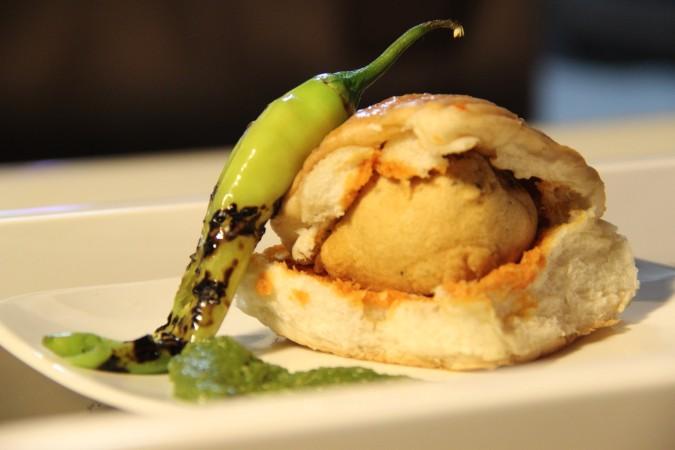
Vada Pav - © Rutvi Mistry
Festivals & Local Celebrations
Ganesh Chaturthi
Time of Year: August to September (dates vary based on the lunar calendar)
Ganesh Chaturthi is one of Mumbai's most vibrant festivals, celebrating the birth of Lord Ganesh. Over the course of ten days, the city transforms into a lively hub with huge Ganesh idols displayed in homes and public spaces. Streets are filled with music, dance, and joyful processions, culminating in the immersion of these idols in the sea. Visitors will be treated to elaborate decorations and the chance to taste traditional sweets like modaks, which are a festival highlight.
Diwali
Time of Year: October to November (dates vary based on the lunar calendar)
Known as the Festival of Lights, Diwali is a dazzling affair in Mumbai. The city glows with oil lamps, homes are adorned with colorful rangoli, and fireworks light up the night sky. The celebration symbolizes the victory of light over darkness, and visitors can indulge in festive sweets, shop for gifts, and soak in the warmth of the celebrations that take over the city streets.
Holi
Time of Year: March (dates vary based on the lunar calendar)
Holi, the Festival of Colors, brings Mumbai to life with a splash of vibrant hues. Participants celebrate by throwing colorful powders and water at one another, symbolizing joy and the arrival of spring. Music, dancing, and street food play a big role in this lively festival, with visitors encouraged to join in the fun and enjoy traditional treats like gujiya.
Kala Ghoda Arts Festival
Time of Year: Early February (dates vary)
The Kala Ghoda Arts Festival is a cultural showcase that brings together artists, performers, and food lovers for nine days of creativity. Set in the historic Kala Ghoda district, this festival features art exhibits, dance performances, workshops, and food stalls. Visitors can explore local crafts, enjoy live music, and dive into Mumbai’s rich artistic culture.
Gudi Padwa
Time of Year: March or April (dates vary based on the lunar calendar)
Marking the start of the Maharashtrian New Year, Gudi Padwa is celebrated with great enthusiasm. Locals hoist the Gudi (a decorated flagpole) outside their homes as a symbol of prosperity and victory. Traditional dishes and colorful rangoli designs are an integral part of the celebration. Visitors can enjoy the festive atmosphere, sample local delicacies, and witness the city’s vibrant cultural heritage.
Eid al-Fitr
Time of Year: Varies (based on the lunar calendar)
Eid al-Fitr marks the end of Ramadan, a month of fasting for Muslims. Mumbai comes alive with communal prayers, joyful celebrations, and festive meals. Areas like Mohammad Ali Road are particularly lively, with food stalls offering a delicious spread of traditional dishes. Visitors can immerse themselves in the bustling energy and savor the sweet and savory treats shared during this special time.

Ganesh Chaturthi - © arunachalobserver
Weather in Mumbai: Best Time to Visit
Mumbai experiences a tropical climate with distinct wet and dry seasons, so understanding its weather patterns is key to planning your trip. Here's a breakdown of what to expect:
Average Temperatures
- Winter (December to February): Temperatures range from 16°C to 32°C (61°F to 90°F), offering pleasant, dry weather perfect for outdoor activities and sightseeing.
- Summer (March to May): With lows around 24°C (75°F) and highs reaching up to 35°C (95°F), the summer months can be quite hot and humid, with temperatures peaking above 40°C (104°F) in May.
- Monsoon (June to September): Mumbai’s monsoon season brings heavy rains, with temperatures between 25°C and 32°C (77°F to 90°F). July is the wettest month, often seeing over 900 mm (35.4 inches) of rain.
- Post-Monsoon (October to November): Temperatures range from 23°C to 34°C (73°F to 93°F) as the rains taper off, but the humidity remains high.
Rainfall Patterns
- Annual Rainfall: Mumbai receives about 2,200 mm (87 inches) of rain annually, with the majority falling during the monsoon months.
- Wettest Month: July typically sees the heaviest rainfall, exceeding 900 mm (35.4 inches).
- Driest Months: January and February are the driest, with virtually no rain.
Best Time to Visit
The ideal time to explore Mumbai is from November to February, when the weather is cooler, with mild temperatures and lower humidity, making outdoor activities enjoyable. Summers can be sweltering, and monsoons bring heavy downpours, which may disrupt travel plans.
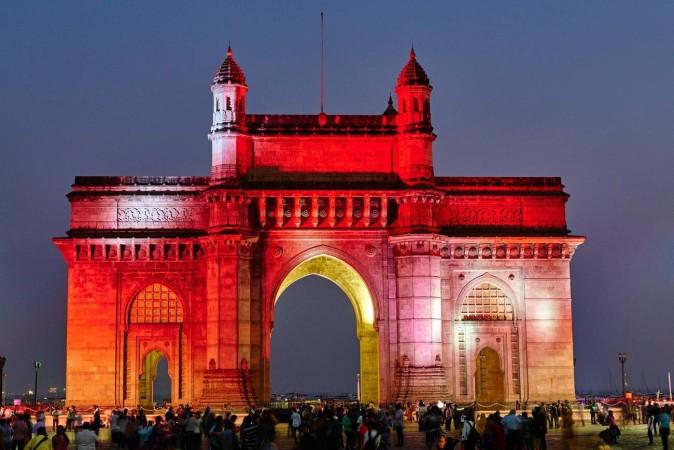
Gateway of India - © gather
Culture Etiquette in Mumbai
- Greetings: In Mumbai, a common and respectful greeting is "Namaste"—placing your hands together in a prayer position and bowing slightly. This gesture reflects respect and humility, making it ideal for both formal and casual settings.
- Dining Etiquette: When dining, it's traditional to eat with your right hand, as the left hand is considered unclean in Indian culture. Be mindful not to offer or share food with your left hand, as this can be seen as impolite.
- Public Displays of Affection: In Mumbai, public displays of affection, like hugging or kissing, are generally frowned upon. It's best to keep such interactions discreet to avoid drawing unwanted attention.
- Dress Code: Modesty is important, especially when visiting religious sites. Women should avoid revealing clothing, while men are encouraged to wear comfortable yet respectful attire. Covering shoulders and knees is recommended in more conservative areas.
- Religious Customs: When visiting places of worship, such as temples or Sufi shrines, it’s customary to cover your head as a sign of respect. This applies to both men and women and shows humility.
- Local Interaction: Mumbai locals may ask about your personal life, such as your family or job. This curiosity is typically a sign of friendliness and interest, not intrusiveness. Additionally, showing respect to elders is essential—use titles like "Mr." or "Ms." formally, and "Uncle" or "Aunty" informally for older people.
- Gift Giving: If invited to someone’s home, bringing a small gift is a thoughtful gesture. Avoid gifts made from leather, alcohol, or anything in black or white, as these colors can have negative connotations in Indian culture.
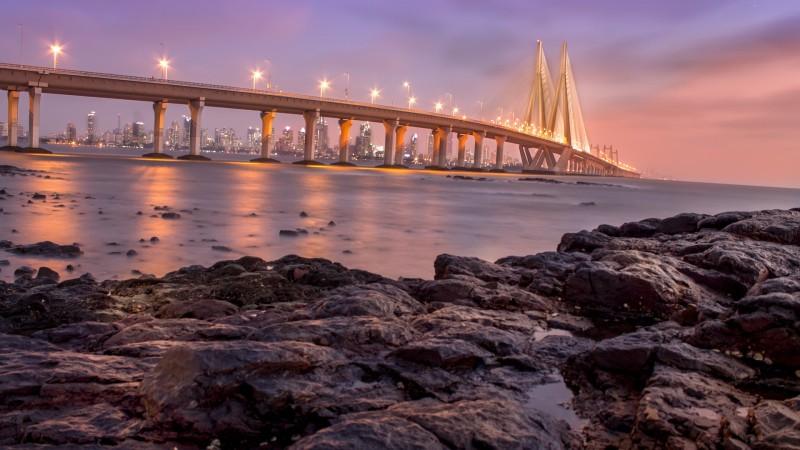
Bandra-Worli Sea Link - © gather
Shopping in Mumbai
Mumbai offers a vibrant shopping scene that caters to a wide range of tastes and budgets. Here are some of the best shopping districts, markets, and stores, especially for local crafts and souvenirs:
Top Shopping Districts and Markets
- Colaba Causeway:Colaba Causeway is a vibrant street market famous for its eclectic mix of shops offering souvenirs, handicrafts, jewelry, and clothing. The lively atmosphere is complemented by nearby cafes and restaurants, making it a popular spot for both shopping and dining in South Mumbai.
- Linking Road; A favorite shopping destination for locals and tourists alike, Linking Road features a blend of high-end boutiques and street stalls selling trendy clothes, accessories, and footwear. The street is known for its buzzing energy and wide variety of fashionable items.
- Crawford Market: One of Mumbai’s oldest and most iconic markets, Crawford Market offers a variety of fresh produce, spices, and local goods. It also has stores selling handicrafts and souvenirs, providing an authentic glimpse into Mumbai’s bustling market culture.
- Hill Road: Hill Road is the go-to spot for street shopping, with stalls offering fashionable clothing, accessories, and home decor at bargain prices. It’s a popular destination for anyone looking to update their wardrobe without breaking the bank.
- Dadar Flower Market:A bustling market that overflows with vibrant flowers and plants, Dadar Flower Market is an essential stop for those looking to experience local life. You can pick up beautiful floral arrangements or garlands while soaking in the fragrant atmosphere.
Unique Stores and Boutiques
- Fabindia: Fabindia is a celebrated brand offering traditional Indian textiles and handicrafts. From clothing and home decor to organic products, it's the perfect place to find authentic Indian souvenirs that reflect the country’s rich heritage.
- Kala Ghoda Arts Precinct: This artistic neighborhood is brimming with galleries, boutiques, and shops featuring handmade crafts, paintings, and unique jewelry. It’s an excellent destination for art lovers looking to discover one-of-a-kind pieces and support local artisans.
- Bombay Electric: Bombay Electric is a chic boutique offering a curated selection of contemporary Indian fashion, accessories, and home decor. Known for spotlighting both established and emerging designers, this store is a must-visit for fashion-forward shoppers.
- Anokhi: Anokhi is renowned for its block-printed textiles and traditional Indian craftsmanship. The store offers a range of clothing, accessories, and home furnishings that reflect the brand's dedication to sustainable and artisanal practices.
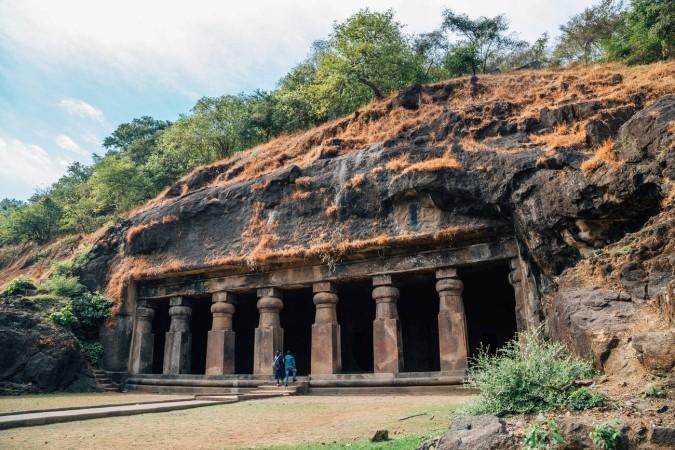
Elephanta Caves - © gather
Essential Travel Information
Getting Around Mumbai
Public Transit
- Mumbai Local Trains: The local train system is the lifeline of the city, with three main lines—Western, Central, and Harbour. Running from around 4:00 AM to 1:00 AM, trains are usually punctual and cover a vast portion of the city. The iconic Chhatrapati Shivaji Maharaj Terminus serves as both a transit hub and a UNESCO World Heritage site.
- Mumbai Metro: Launched in 2014, the metro is expanding across the city. Currently, it has one operational line from Versova to Ghatkopar, with several others under construction, offering a more modern alternative to the local trains.
- Buses: Operated by BEST (Brihanmumbai Electric Supply and Transport), Mumbai’s buses are a budget-friendly way to get around. The red double-decker buses, in particular, are popular among tourists and offer scenic views of the city.
Taxis and Auto Rickshaws
- Taxis: Traditional black-and-yellow taxis are a common sight and can be hailed on the street or booked via phone. Always ensure the meter is running, especially during short trips. Prepaid taxi services are also available at major locations like the airport and railway stations.
- Auto Rickshaws: Auto rickshaws are a quick and affordable way to navigate the suburbs. They operate on metered fares and are ideal for short distances, though they are not allowed in certain parts of South Mumbai.
- Uber and Ola: Both ride-sharing apps are widely used across Mumbai. Offering a range of vehicle options, from budget-friendly rides to premium cars, they provide a more comfortable alternative to traditional taxis and auto rickshaws.
Accommodation Choices
Mumbai offers a wide variety of accommodations, from luxurious hotels to budget-friendly stays, catering to all kinds of travelers:
Luxury Hotels
- Taj Mahal Palace: This historic five-star hotel near the Gateway of India is renowned for its opulence, impeccable service, and heritage charm.
- The Oberoi: Located along Marine Drive, The Oberoi offers stunning sea views and world-class amenities, making it a top choice for luxury travelers.
Mid-Range Hotels
- Trident Nariman Point: A highly-rated hotel in the business district, offering sea-facing rooms and excellent service at more affordable rates.
- ITC Grand Central: Located in Parel, this hotel combines modern comfort with a touch of heritage, offering a cozy yet sophisticated stay.
Budget Accommodations
- Zostel Mumbai: A popular choice for backpackers, this hostel offers dormitory-style rooms and a vibrant social atmosphere.
- Hotel Marine Plaza: A budget-friendly hotel near Marine Drive, providing comfortable stays with all essential amenities at reasonable rates.
Airport Hotels
- Taj Santacruz: This luxurious airport hotel offers convenient access to the terminals along with high-end accommodations.
- Novotel Mumbai Airport: A modern hotel with excellent facilities, perfect for transit passengers or those looking for a comfortable stay near the airport.
Articles for you

Explore Yala National Park - Sri Lanka Travel, Asia
Tucked away in Sri Lanka’s southeastern corner, Yala National Park is where wild nature meets deep tradition. Known worldwide for its leopard population, the park is also home to elephants, sloth bears, crocodiles, and hundreds of bird species. Beyond wildlife, Yala opens doors to a cultural landscape dotted with ancient temples, Buddhist ruins, and coastal villages. For travelers seeking more than just a safari, Yala offers a chance to explore eco-tourism, local communities, and sacred heritage sites.
Population: The Yala National Park area doesn’t have a human population.
Economy: The economy around Yala National Park thrives on a blend of eco-tourism, agriculture, and local services. Safari tours, eco-lodges, and cultural experiences drive steady income for nearby towns like Tissamaharama and Kataragama, supporting thousands of families.
Landmarks: Famous for Block I of Yala and wildlife encounters, including elephants, sloth bears, crocodiles, and exotic bird species.

Explore Galle - Sri Lanka Travel, Asia
Nestled on Sri Lanka’s southern coastline, Galle is a vibrant city where history meets the sea. Its cobbled streets, colonial architecture, and serene beaches make it a must-visit destination for travelers seeking a blend of culture, adventure, and relaxation. A UNESCO World Heritage site, Galle captivates visitors with its Dutch Fort, bustling markets, and friendly locals. Whether you’re exploring the ramparts at sunset or savoring fresh seafood by the shore, Galle promises an unforgettable journey into Sri Lanka’s heritage.
Population: Approximately 113,000 in 2023.
Economy: Galle’s economy thrives on tourism, trade, and fisheries. The city’s historic fort, colonial architecture, and coastal charm draw thousands of international visitors each year, making tourism its main economic driver. Fishing remains vital for local livelihoods, supplying fresh seafood across the region.
Landmarks: Famous for the Galle Fort, Dutch Reformed Church & Maritime Museum, and Unawatuna Beach.

Explore Bentota - Sri Lanka Travel, Asia
Nestled along Sri Lanka’s southwestern coast, Bentota is a tropical paradise that blends golden beaches, vibrant culture, and thrilling adventures. Famous for its calm waters, luxury resorts, and scenic river estuary, Bentota has become a top destination for travelers seeking both relaxation and authentic experiences. From serene beach walks at sunrise to adrenaline-pumping water sports, this coastal town offers a perfect balance of leisure and exploration. With its proximity to Colombo and Galle, Bentota is easy to reach, making it an ideal stop for both short escapes and extended holidays.
Population: Approximately 37,000 in 2023.
Economy: Bentota’s economy thrives mainly on tourism, which drives local businesses such as hotels, restaurants, and wellness retreats. The town also benefits from fishing, coconut cultivation, and handicrafts like wood carving and batik textiles. Many residents rely on the growing demand for water sports and Ayurvedic treatments, making tourism the backbone of both income and employment in the area.
Landmarks: Famous for Bentota Beach, Bentota River Safari, and Kande Vihara Temple.

Explore Mirissa - Sri Lanka Travel, Asia
Mirissa is a charming coastal town on Sri Lanka’s southern shoreline. Known for its golden beaches, turquoise waters, and vibrant marine life, it has become a must-visit stop for travelers exploring the island. Many come for whale watching, surfing, and sunset views at Coconut Tree Hill, but Mirissa offers much more than postcard beauty. The fishing boats you see anchored by the bay carry generations of stories. Local traditions, delicious cuisine, and a laid-back rhythm of life shape every visitor’s experience.
Population: Approximately 4,700 in 2023.
Economy: Mirissa’s economy is largely shaped by its coastal location. Fishing has long been the backbone of local livelihoods, with generations relying on the Indian Ocean for income. In recent decades, tourism has become the main driver of growth, thanks to whale watching, surfing, and beachside hospitality.
Landmarks: Famous for Mirissa Beach, Coconut Tree Hill, and Parrot Rock Bridge.

Explore Nuwara Eliya - Sri Lanka Travel, Asia
Tucked away in the Central Highlands of Sri Lanka, Nuwara Eliya is often called “Little England”. With its rolling tea plantations, cool misty mornings, and colonial charm, this mountain town feels like a step into another world. Travelers come here to breathe fresh air, walk through flower gardens, sip the finest Ceylon Tea, and enjoy a pace of life far from the island’s busy cities. Whether you’re drawn by scenic landscapes, heritage architecture, or the warmth of its people, Nuwara Eliya is a destination that blends nature, culture, and history in perfect harmony.
Population: Approximately 781,000 in 2023.
Economy: Nuwara Eliya’s economy thrives mainly on tea production, as it sits in the heart of Sri Lanka’s central highlands, famous worldwide for Ceylon Tea. The city also benefits from a growing tourism industry, attracting visitors with its colonial charm, cool climate, and scenic landscapes.
Landmarks: Famous for Gregory Lake, Hakgala Botanical Garden, and Victoria Park.

Explore Sukau - Malaysia Travel, Asia
Nestled on the banks of the Kinabatangan River in Sabah, Malaysian Borneo, Sukau is a destination where wildlife, culture, and conservation come together. Known as one of Asia’s top spots for river safaris and eco-tourism, this quiet village offers a front-row seat to encounters with Bornean orangutans, pygmy elephants, proboscis monkeys, and exotic birdlife.
Population: Approximately 1,400 in 2019.
Economy: Sukau’s economy is shaped by its riverine location and natural resources. Traditionally, the Orang Sungai community relied on fishing, small-scale farming, and forest gathering for their livelihood. Today, the village has shifted toward eco-tourism, with river cruises, jungle trekking, and homestays providing income.
Landmarks: Famous for the Kinabatangan River cruises, Gomantong Caves, and Ox-bow lakes and wetlands.
